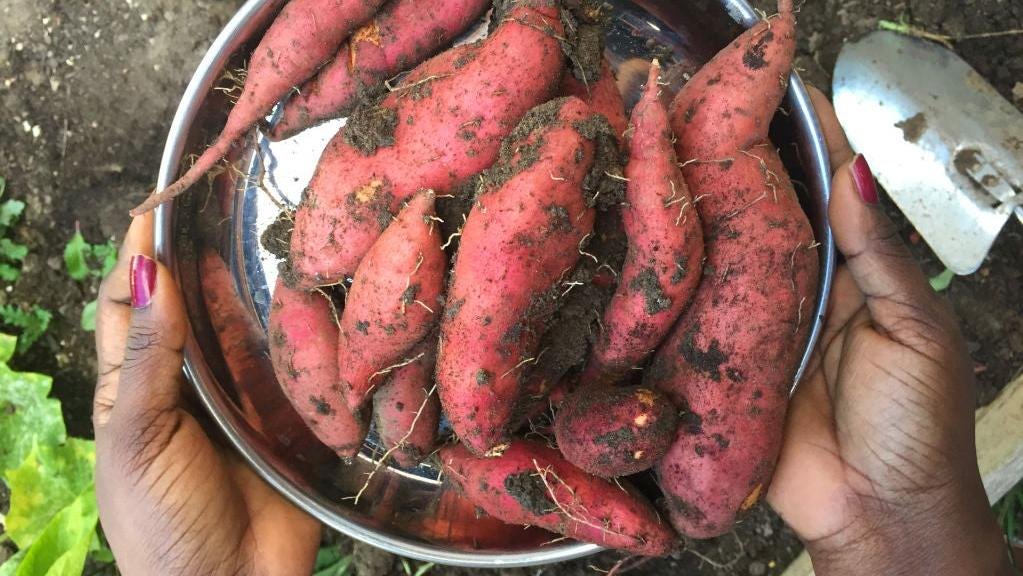Confusion And Connection: The Yams And Sweet Potatoes Of The African Diaspora
A yam by any other name would be just as important to our culinary history.
Welcome to Flavor & Soul: A Brief History of African American Food. We'll be taking a closer look at one dish each week and tracing its roots within the African American cooking tradition.
Sweet potatoes are a revered staple for most important meals in African American life. No plate of soul food is complete without the buttery liquid from candied sweet potatoes flowing into the juice from the greens and mixing with the noodles from the mac and cheese. Although fall and holiday meals like Thanksgiving and Christmas would be the expected time for these vegetables, they are served all year round in the Black community. Whether in the form of a side dish or a pie, sweet potatoes are a necessary part of our celebrations. But why?
In the groundbreaking Netflix series High on the Hog: How African American Cuisine Transformed America, Dr. Jessica B. Harris, the foremost authority on the food of the African Diaspora and author of the book upon which the series is based, breaks it down during the very first episode. Strolling through a bustling open-air market in the West African nation of Benin, she pointed to the mountains of yams everywhere. The yam, a tuber with rough skin that resembles tree bark and white flesh, is so important to the West African diet that festivals are dedicated to it in parts of Nigeria and Ghana. The very word yam can be traced to the phrase "to eat" in several West African dialects.
Yams grow in a tropical environment, and although they were used to feed enslaved prisoners on ships during the Transatlantic Slave Trade, they did not grow very well in the United States. So, like many elements of their cuisine that had to be substituted once enslaved Africans were shipped to America, the sweet potato became the next best thing to a yam. Brought over from Central and South America, sweet potatoes were plentiful and easily cultivated on American soil.
Sweet potatoes are naturally sweet and related to the Morning Glory family. Yams, meanwhile, are dense and more neutral in taste, and they absorb the flavor of the seasonings with which they are cooked. They often appear in stews, soups, and as a side dish pounded into a doughy pulp called fufu. Yams and sweet potatoes don't taste or look the same, but we made it work. Although they are treated like they are interchangeable in the U.S., and you might have been taught that these are just two different names for the same thing, sweet potatoes and yams are, in fact, not even related. The only similarity between them is that sweet potatoes have been granted the same revered status in the African American diet as yams have in Africa.
One of the first recipes that my grandmother taught me was how to make candied sweet potatoes. My family has never called them yams, but that's the name that many Black cooks still call the orange, starchy tuber. I learned to mix butter, brown sugar, cinnamon, and nutmeg by visual and taste cues rather than measurements. The sweet potatoes would caramelize in her cast iron skillet and come out creamy, soft, rich, and sweet.
I make candied sweet potatoes all year round when I have the time, but sweet potato pie is a whole other thing. My great aunt had a legendary recipe that was beloved by anyone who tasted it, but nobody managed to watch her and learn all the details that went into its preparation. Her sweet potato pie, as thick as a phone book and scented with a generous amount of clove and cinnamon, remains a popular collective culinary memory in my family. I used to think our reverence for it was because of the impeccable, multi-layered flavors and the skill she used, but now I realize that it goes much deeper than that. It goes all the way back to Africa.
